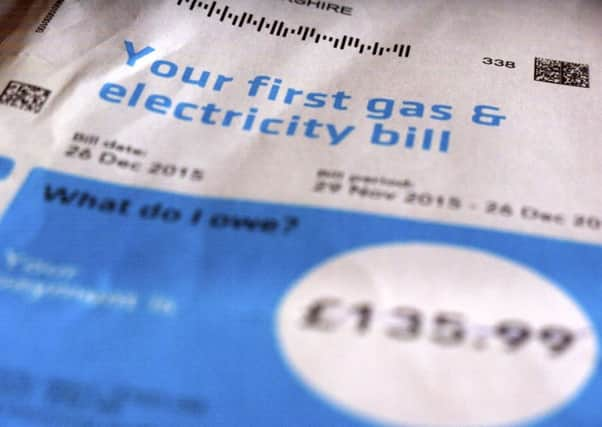Are they hiding the best deals from you? How to read between the lines of the price comparison sites


The “big six” firms - British Gas, EDF, E.ON, Npower, Scottish Power and SSE - have fielded many accusations over the years of profiteering at the expense of the rest of us, and you could be forgiven for thinking they were part of some kind of cartel, artificially inflating prices while freezing out smaller competitors.
But you’d be wrong: there are nearly 40 smaller and often cheaper companies out there, and if you haven’t heard of them, this may be a good time to learn how to read between the lines on the price comparison websites - especially after reports that consumers are not always being shown the best deals.
Advertisement
Hide AdAdvertisement
Hide AdYour price increase letter will be full of statutory information about your right to change your tariff and your supplier, but it’s often couched in overcomplicated language designed to make the whole process sound more trouble than it’s worth.
In fact, you can do it inside an hour, without lifting the phone and without risk of interrupting your supply.
The major comparison sites are accredited by the regulator, Ofgem. You can use them with confidence to find a cheaper deal from a new supplier, but don’t make the mistake of thinking that you have to have to use the same site to make the actual switch.
In particular, make sure you don’t select the option to show only deals available from the site you are currently looking at; you may be excluding the best offers.
Advertisement
Hide AdAdvertisement
Hide AdThis is because some of the smaller, independent suppliers do not pay commission to the comparison sites. That doesn’t mean you can’t switch to them online; you just have to Google the name of the one you’ve chosen and sign up on its own website.
In picking a deal, look out for bear-traps like exit fees if you want to switch again, and compare the standing charges for gas and electricity, as well as the price per kilowatt. Pay attention also to whether your new deal is a fixed-term offer, under which the price could change dramatically after the first year. You’ll find the rates you’re paying at the moment on the price-hike letter from your current supplier - even if you believed you were on a competitive, dual-fuel tariff, you may find you can save £200-£300 a year by switching.
The risk in choosing a small company is that they may go bust, which is what happened to the three year-old, Preston-based GB Energy Supply, last November. If that does happen, you won’t be cut off, nor will you lose any credit you’ve accrued. Instead, Ofgem will appoint a replacement energy supplier - but that supplier does not have to honour your existing tariff, so a sharp and immediate price rise may result.
It isn’t necessarily the case, however, that the cheaper suppliers are small. Robin Hood Energy, for instance, is a subsidiary of Nottingham City Council, which set it up as a not-for-profit organisation 18 months ago. The jury is out on whether or not that was a good idea.
Advertisement
Hide AdAdvertisement
Hide AdThe roots of the Big Six companies date back to the privatisation of Britain’s electricity supply in 1989, and the scrapping of the old area electricity boards. Npower contains the remains of the former Yorkshire Electricity Board. Terms like that are an anachronism now - but if you’re on the wrong tariff, your current bill may be even more of one